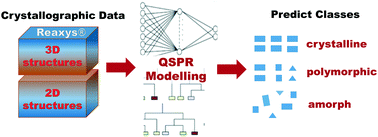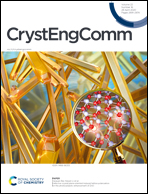Machine learning methods to predict the crystallization propensity of small organic molecules
Abstract
Machine learning (ML) algorithms were explored for the prediction of the crystallization propensity based on molecular descriptors and fingerprints generated from 2D chemical structures and 3D molecular descriptors from 3D chemical structures optimized with empirical methods. In total, 57 815 molecules were retrieved from the Reaxys® database, from those 53 998 molecules are recorded as crystalline (class A), 3097 as polymorphic (class B), and 720 as amorphous (class C). A training data set with 40 462 organic molecules was used to build the models, which were validated with an external test set comprising 17 353 organic molecules. Several ML algorithms such as random forest (RF), support vector machines (SVM), and deep learning multilayer perceptron networks (MLP) were screened. The best performance was achieved with a consensus classification model obtained by RF, SVM, and MLP models, which predicted the external test set with an overall predictive accuracy (Q) of up to 80%.

- This article is part of the themed collection: Editor’s Collection: Computer aided solid form design


 Please wait while we load your content...
Please wait while we load your content...